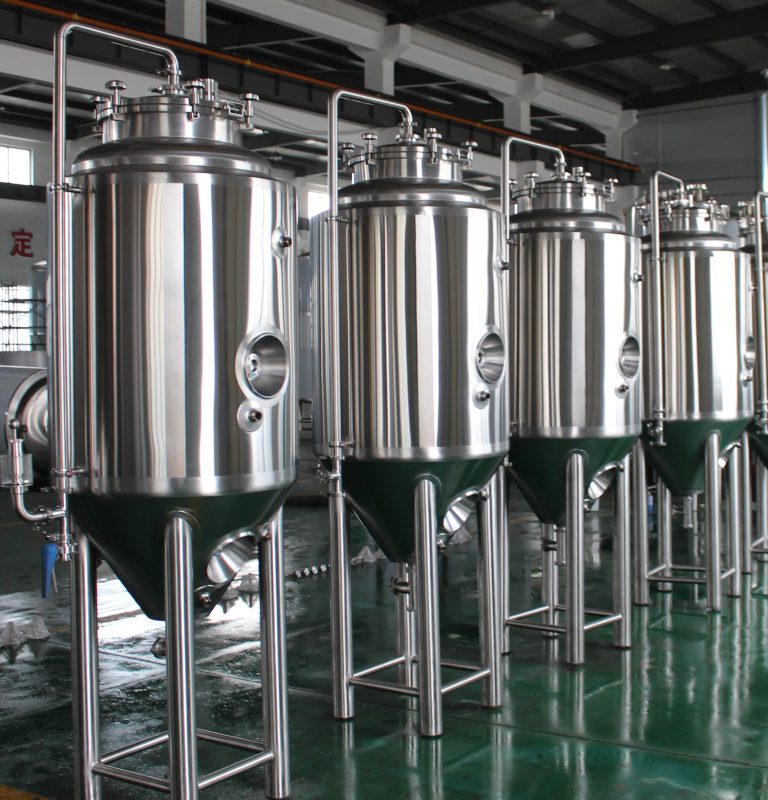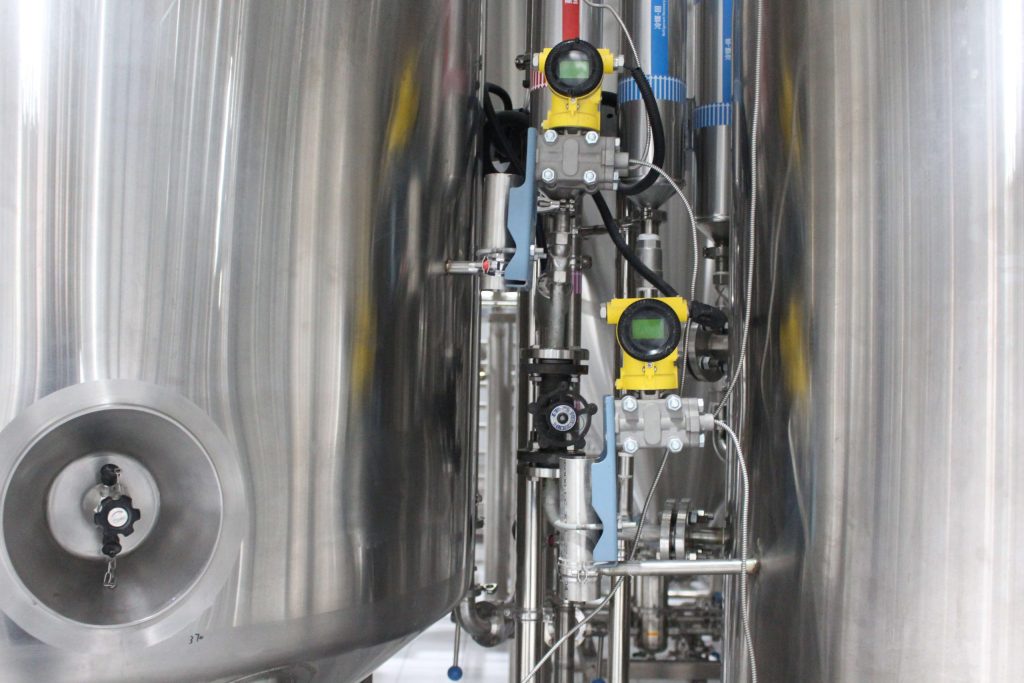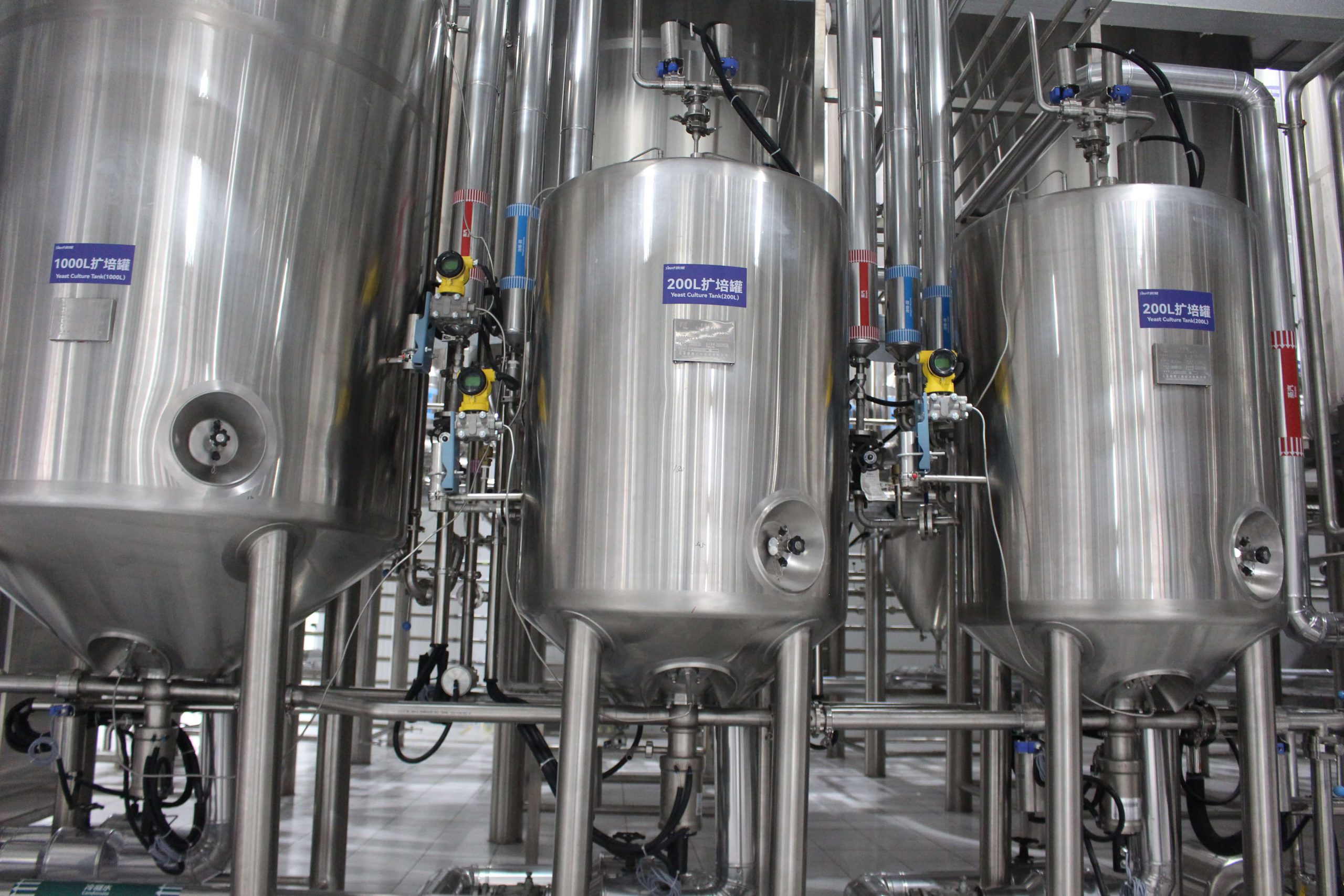Einführung

Bierbrauen ist nicht nur eine Kunst, es ist eine Wissenschaft, die in jeder Phase Präzision und Kontrolle erfordert. Im Mittelpunkt dieses wissenschaftlichen Prozesses steht Hefe, ein Mikroorganismus, der eine entscheidende Rolle bei der Gärung spielt. Das Hefevermehrungsgefäß (YPV) ist ein spezielles Gerät, das sicherstellt, dass die Hefe gesund, lebensfähig und bereit für die Gärung ist. In diesem Blog werden wir uns eingehend mit der Bedeutung von Hefevermehrungsgefäßen befassen und ihr Design, ihre Funktionalität und bewährte Praktiken untersuchen, die Brauer anwenden können, um die Effizienz ihrer Hefemanagementprozesse zu maximieren.
Was ist ein Yeast Propagation Vessel?
A yeast propagation vessel is specifically designed to cultivate yeast under controlled conditions prior to its addition to the main fermentation tank. This vessel allows brewers to grow a robust population of yeast, ensuring that the cells are healthy and ready to ferment sugars into alcohol and carbon dioxide effectively. Understanding the technical specifications and operational parameters of a yeast propagation vessel can lead to better brewing outcomes and a more efficient brewing process.
Key Features of a Yeast Propagation Vessel
| Besonderheit | Beschreibung |
|---|---|
| Material | Typically made from stainless steel for durability and ease of cleaning, preventing contamination. |
| Größe | Varies significantly, from small lab-scale (5-20 gallons) to large commercial sizes (up to several hundred gallons) to suit different brewing operations. |
| Temperaturregelung | Equipped with precise temperature regulation mechanisms, ensuring optimal growth conditions for yeast. |
| Aeration Capability | Designed to allow for oxygenation during yeast propagation, crucial for yeast health and vigor. |
| Sampling Ports | Features multiple sampling ports to facilitate monitoring yeast health and performance throughout the propagation cycle. |
| Cleanability | Constructed with smooth surfaces and removable components to ensure easy cleaning and sanitization, essential for preventing contamination. |
| Druckmanagement | Can handle pressure for specific fermentation needs, particularly useful in certain beer styles and fermentation processes. |
Die Rolle der Hefe beim Brauen
Yeast is often referred to as the “heart” of brewing due to its crucial role in fermentation. This microorganism is responsible for converting fermentable sugars from malted grains into alcohol and carbon dioxide. Additionally, yeast contributes significantly to the flavor, aroma, and mouthfeel of the beer. Understanding the biology of yeast and the specific roles different strains play in brewing can help brewers make informed decisions about their fermentation process.
Importance of Yeast Health
- Fermentation Efficiency: Healthy yeast ferments sugars quickly and efficiently, leading to a clean and robust fermentation profile. Yeast health affects the overall fermentation time and can influence the final gravity of the beer.
- Geschmacksentwicklung: Different yeast strains produce a variety of flavor compounds, including esters and phenols, which can add complexity and uniqueness to the final product. For instance, some strains are known for fruity aromas, while others may produce spicy or floral notes.
- Alcohol Tolerance: Certain yeast strains possess high alcohol tolerance, which is essential for brewing stronger beers or spirits. Choosing the right strain for your intended beer style is critical for achieving the desired alcohol content without compromising flavor.
Vorteile der Verwendung eines Yeast Propagation Vessel
Investing in a yeast propagation vessel can yield numerous benefits that enhance the brewing process. These advantages are particularly noticeable in larger or more professional brewing operations but can also benefit homebrewers looking to optimize their fermentation.
Controlled Environment
The yeast propagation vessel allows brewers to maintain optimal conditions for yeast growth. By controlling temperature, pH, and oxygen levels, brewers can significantly improve the health and viability of their yeast. For instance, a consistent temperature range tailored to the specific yeast strain can prevent stress and promote rapid cell division.
Increased Yeast Viability
Propagating yeast in a dedicated vessel ensures that only the healthiest cells are selected for fermentation. This selection process leads to increased yeast viability, meaning that the yeast will perform better during fermentation, producing fewer off-flavors and inconsistencies in the final product.
Consistency in Brewing
Using a yeast propagation vessel contributes to consistency across brewing batches. By standardizing the yeast propagation process, brewers can achieve uniform results, which is vital for maintaining brand integrity and customer satisfaction.
Kosteneffizienz
While the initial investment in a yeast propagation vessel may be significant, the long-term cost-effectiveness is undeniable. Healthy yeast reduces the likelihood of fermentation failures, thus minimizing the need for re-brewing and associated costs. This efficiency can lead to substantial savings over time.
Best Practices for Using a Yeast Propagation Vessel
To maximize the benefits of your yeast propagation vessel, it’s essential to follow best practices that ensure optimal yeast health and propagation success.
Desinfektion
Proper sanitization is the cornerstone of successful yeast propagation. All equipment, including the vessel, hoses, and tools, must be thoroughly cleaned and sanitized before use to prevent contamination. This includes using appropriate sanitizing agents and ensuring contact time is sufficient for effective microbial kill.
Monitor Parameters
Regular monitoring of key parameters such as temperature, pH, and oxygen levels is vital for yeast health. Use precise instruments and tracking systems to maintain these parameters within ideal ranges, and adjust conditions as necessary to promote optimal yeast activity.
Choose the Right Yeast Strain
Selecting a yeast strain that aligns with your brewing goals is crucial. Different strains have unique characteristics that can impact the fermentation process and final beer flavor. Research various yeast strains and their profiles to make informed decisions that align with your desired beer style.
Aerate the Wort
Aeration is a critical step in yeast propagation. Ensuring your wort is adequately oxygenated before adding yeast promotes healthy growth and reproduction. Employ techniques such as gentle stirring or using a diffusion stone to introduce oxygen without introducing contaminants.
Harvesting and Storing Yeast
Understanding how to properly harvest and store yeast from your propagation vessel is essential for maintaining yeast health for future batches. Implement a systematic approach to yeast collection and storage, including proper techniques for pitching and the use of appropriate containers.
Scaling Up
When transitioning from a propagation vessel to the main fermentation tank, it is important to scale up the yeast volume gradually. This approach helps avoid fermentation lag and ensures a smoother transition, ultimately leading to more consistent fermentation performance.
Aufzeichnungen
Maintaining detailed records of each propagation cycle is critical for continuous improvement. Track yeast health, environmental parameters, and any adjustments made during the process. This data can provide valuable insights for optimizing future yeast propagation and brewing efforts.
Common Issues with Yeast Propagation Vessels
Despite their advantages, yeast propagation vessels can present challenges. Understanding these common issues can help brewers troubleshoot effectively and maintain optimal yeast health.
Kontamination
Contamination is one of the most significant risks in yeast propagation. Off-flavors and failed fermentations can occur if contaminants are introduced. Regularly inspect for signs of contamination, such as unexpected flavors or visual abnormalities, and practice good sanitation consistently.
Temperaturschwankungen
Temperature fluctuations can lead to yeast stress and inconsistent results. Investing in temperature control equipment, such as thermostats or chillers, can help maintain stable conditions within the yeast propagation vessel.
Inadequate Oxygen Levels
Insufficient oxygen levels can hinder yeast growth, leading to sluggish fermentation. Ensure proper aeration techniques are implemented during the propagation phase, as well as regular monitoring of dissolved oxygen levels to promote robust yeast health.
Yeast Under- or Over-Pitching

Improper yeast pitching rates can lead to various fermentation issues, including stuck fermentations or excessive ester production. Carefully calculate the appropriate pitch rate based on the yeast’s viability, the volume of wort, and the specific requirements of the beer style being brewed.
Abschluss
In summary, the Hefe-Vermehrungsgefäß is an indispensable piece of equipment in the brewing process. Its ability to create a controlled environment for yeast propagation enhances yeast health and ultimately leads to superior brewing outcomes. By understanding the importance of this vessel and implementing best practices, brewers can ensure consistent and high-quality beer production that meets the expectations of discerning consumers.
Häufig gestellte Fragen
Q:What Size Yeast Propagation Vessel Should I Use?
A:The size of your yeast propagation vessel depends on your brewing scale and needs. Smaller breweries may benefit from vessels that hold 5 to 20 gallons, while larger operations often require vessels capable of handling several hundred gallons. Selecting the right size ensures efficient yeast growth and management.
Q:How Often Should I Clean My Yeast Propagation Vessel?
A:Regular cleaning after each use is essential to maintaining yeast health. A thorough cleaning and sanitization process should be conducted to prevent contamination. Establish a cleaning schedule that aligns with your brewing cycles to ensure consistent sanitation practices.
Q:Can I Use My Yeast Propagation Vessel for Other Fermentations?
A:While primarily designed for yeast propagation, many brewers find that yeast propagation vessels can also serve as small batch fermenters for experiments or specialty brews. Just ensure proper cleaning and sanitization between uses to avoid cross-contamination.
Q:How Long Does Yeast Propagation Take?
A:The propagation process typically takes between 24 to 48 hours, depending on the yeast strain and environmental conditions. Monitoring yeast activity through visible fermentation signs can help determine the optimal time for pitching into the main fermentation tank.
Q:What is the Best Yeast Propagation Temperature?
A:The ideal temperature for yeast propagation varies by strain, but it generally falls between 68°F and 75°F (20°C to 24°C). Always refer to the yeast manufacturer’s recommendations for specific temperature guidelines to ensure optimal yeast performance.
Q:How Do I Know If My Yeast is Healthy?
A:Healthy yeast will exhibit vigorous fermentation activity, producing visible bubbles and a foamy head in the propagation vessel. Monitor for any off-odors or unusual colors, which may indicate yeast stress or contamination issues.
Q:Can I Reuse Yeast from My Propagation Vessel?
A:Yes, reusing yeast from your propagation vessel is a common practice. Properly store and handle the yeast to maintain its viability for future batches. This can be a cost-effective method to ensure consistent fermentation performance.

